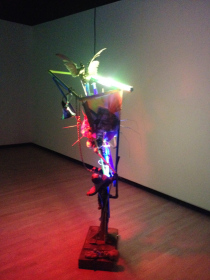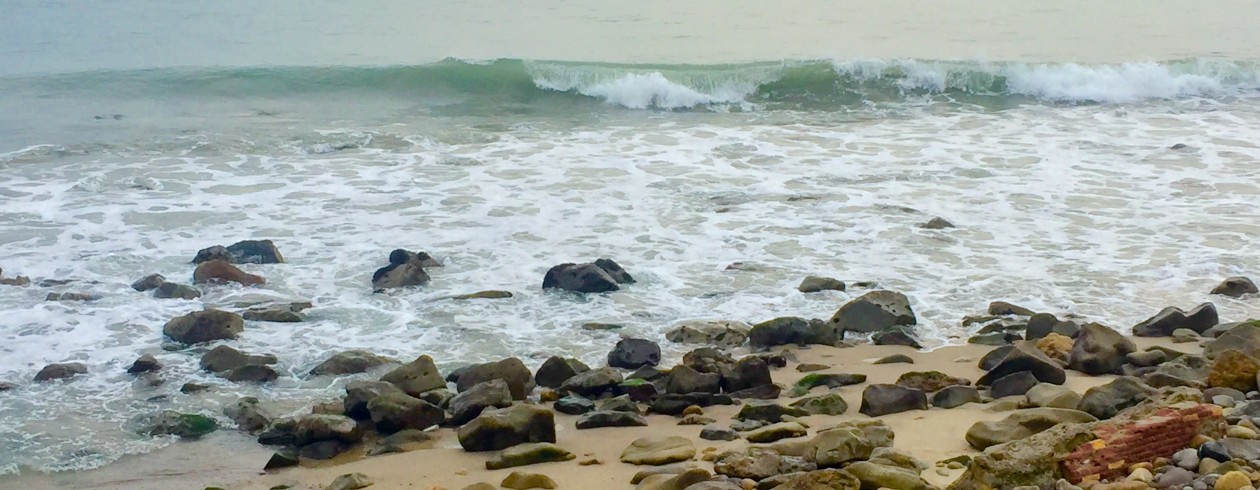Artist: Nick Bamford
Exhibition: Untitled
Media: Cement, Foam Objects, Plaster, Wood
Gallery: CSULB School of Art, Max L. Gatov Gallery East
Website: None
Instagram: nickbam4d
About the Artist
Nick is an undergrad here at CSULB ,graduating this semester with a BFA in Ceramics. After graduating, Nick plans to go to a grad school which he hasn’t made the final decision on yet. Nick stated that he gets the inspiration from his work by living life. Things that have happened to him in his life give him the spark of imagination that helps him with his art. Although it is somewhat tied to his connection with “life”, he says that he is trying to escape from the “real life” by creating art that is weirdly shaped and psychedelic which seems abnormal to the “real life”.

Formal Analysis
The neon lights in the dark room give a flashy mood. The sculpture is built so that it seems very unstable as if one touch can make this “tower of cards” come crumbling down. There are noticeable items that were used to build the structure giving the viewer a sense of The abnormal and dysfunctional way that the sculpture is built shows a “Chaotic” style.
Content Analysis
The nature of Nick’s art was meant to be different. Nick stated that he wanted to leave the clutches of our reality. His artwork shows modern items with twists, whether it is with flashy neon lights or the distorted way he sculpts the figure.
Synthesis/My Experience
I thought that Nick’s art is what I would consider “Eye Candy”. The bright neon lights gave my eyes a feeling of euphoria. While I admired the aesthetics of the the colors, I also liked the deeper meaning behind his work. The idea that he wanted to escape reality and somewhat join and create a new one in which he can immerse himself in fascinated me very much.












